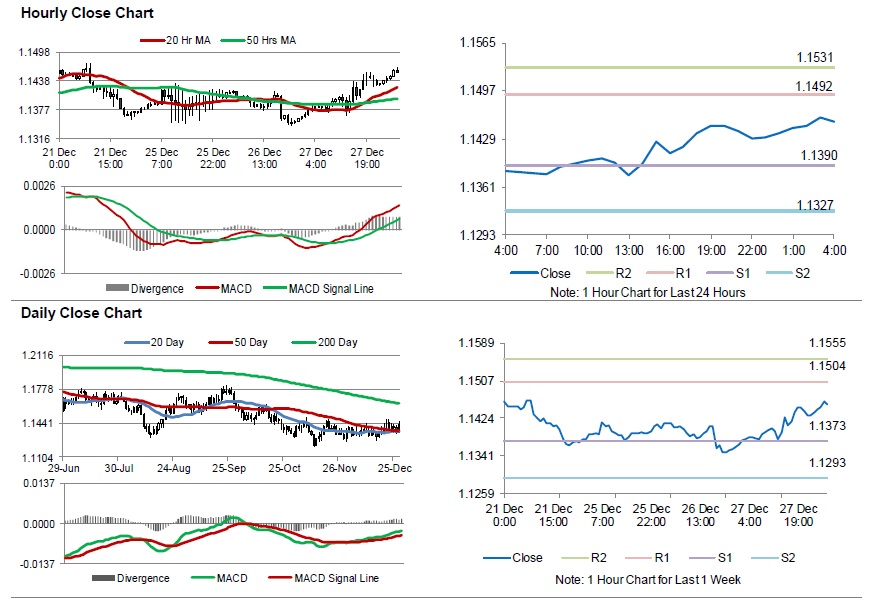For the 24 hours to 23:00 GMT, the EUR rose 0.46% against the USD and closed at 1.1431.
The European Central Bank’s (ECB), in its monthly economic bulletin, indicated that significant monetary policy stimulus is still required, in light of increased downside risks to the economic growth. Further, the ECB hinted that global economy activity is expected to decelerate in 2019 and stabilise thereafter. Additionally, the bank expects global inflationary pressures to rise slowly.
In the US, data indicated that the US consumer confidence index slid to a level of 128.1 in December, declining to its lowest level in five months, amid mounting worries over global economic outlook. In the prior month, the index had registered a revised level of 136.4, while market participants had anticipated for a fall to a level of 133.5.
On the other hand, the nation’s housing price index climbed 0.3% on a monthly basis in October, meeting market expectations. In the previous month, the index had recorded a rise of 0.2%. Moreover, the seasonally adjusted initial jobless claims fell to a level of 216.0K in the week ended 22 December 2018, in line with market expectations and compared to a revised level of 217.0K in the preceding week.
In the Asian session, at GMT0400, the pair is trading at 1.1454, with the EUR trading 0.20% higher against the USD from yesterday’s close.
The pair is expected to find support at 1.1390, and a fall through could take it to the next support level of 1.1327. The pair is expected to find its first resistance at 1.1492, and a rise through could take it to the next resistance level of 1.1531.
Looking forward, investors will closely monitor Germany’s consumer price index for December, set to release later in the day. Later in the day, the US Chicago purchasing managers’ index for December along with advance goods trade balance and pending home sales data, both for November, will be on investor’s radar.
The currency pair is trading above its 20 Hr and 50 Hr moving averages.

